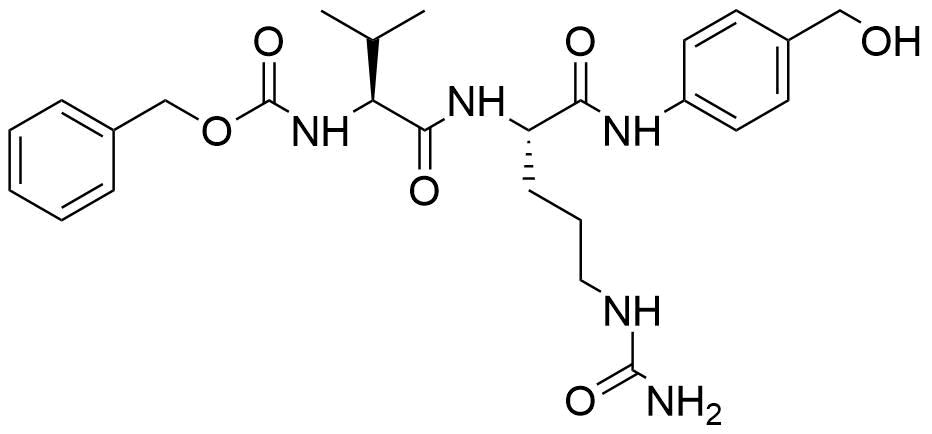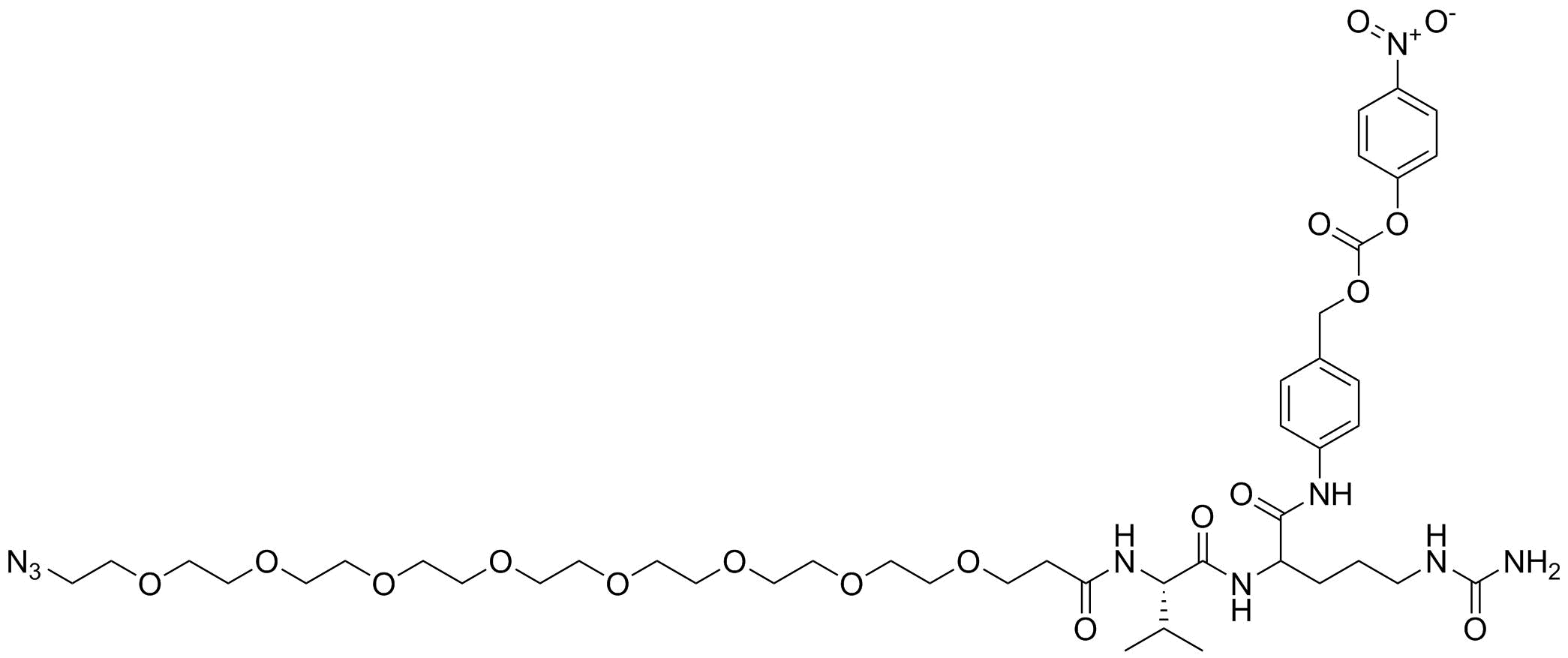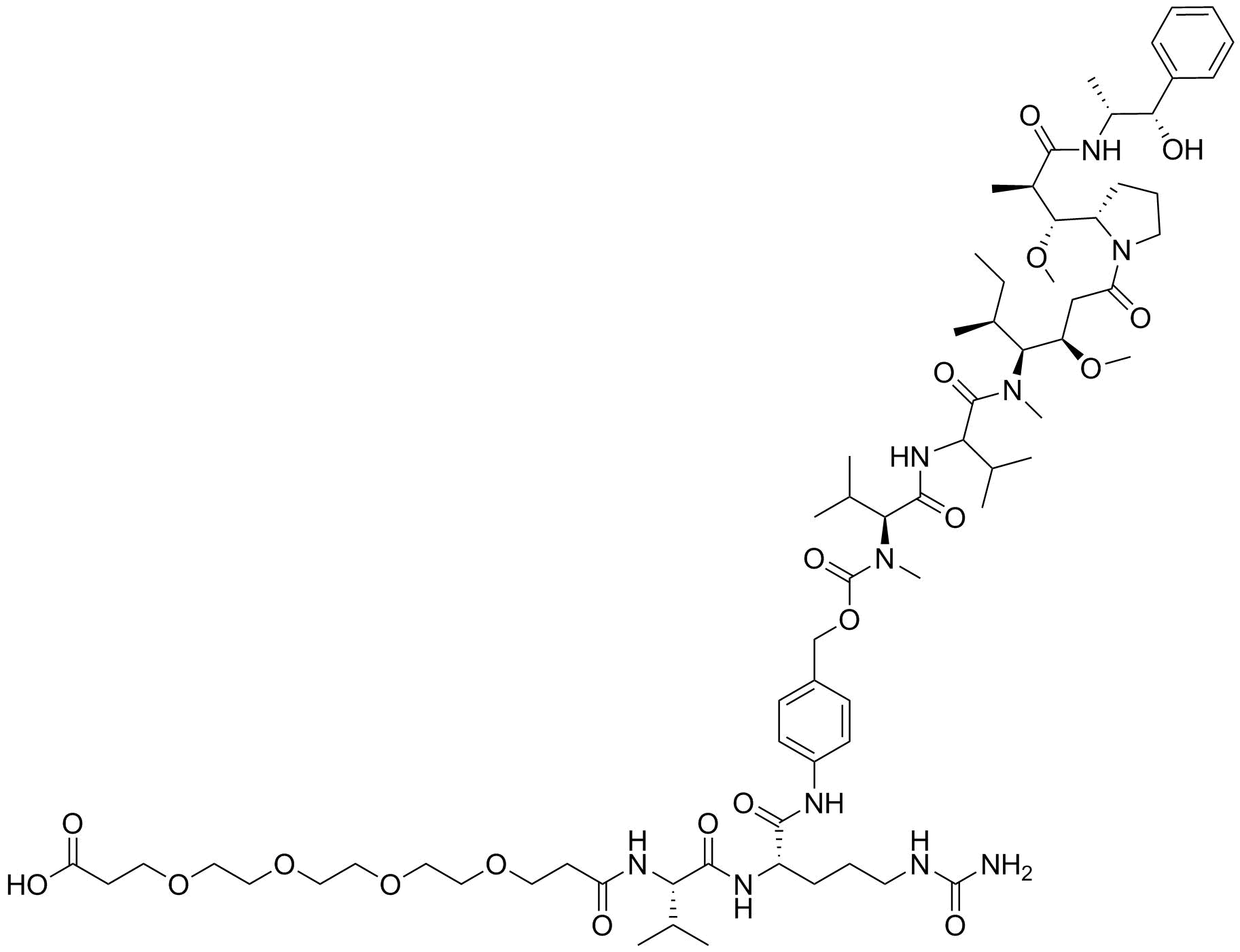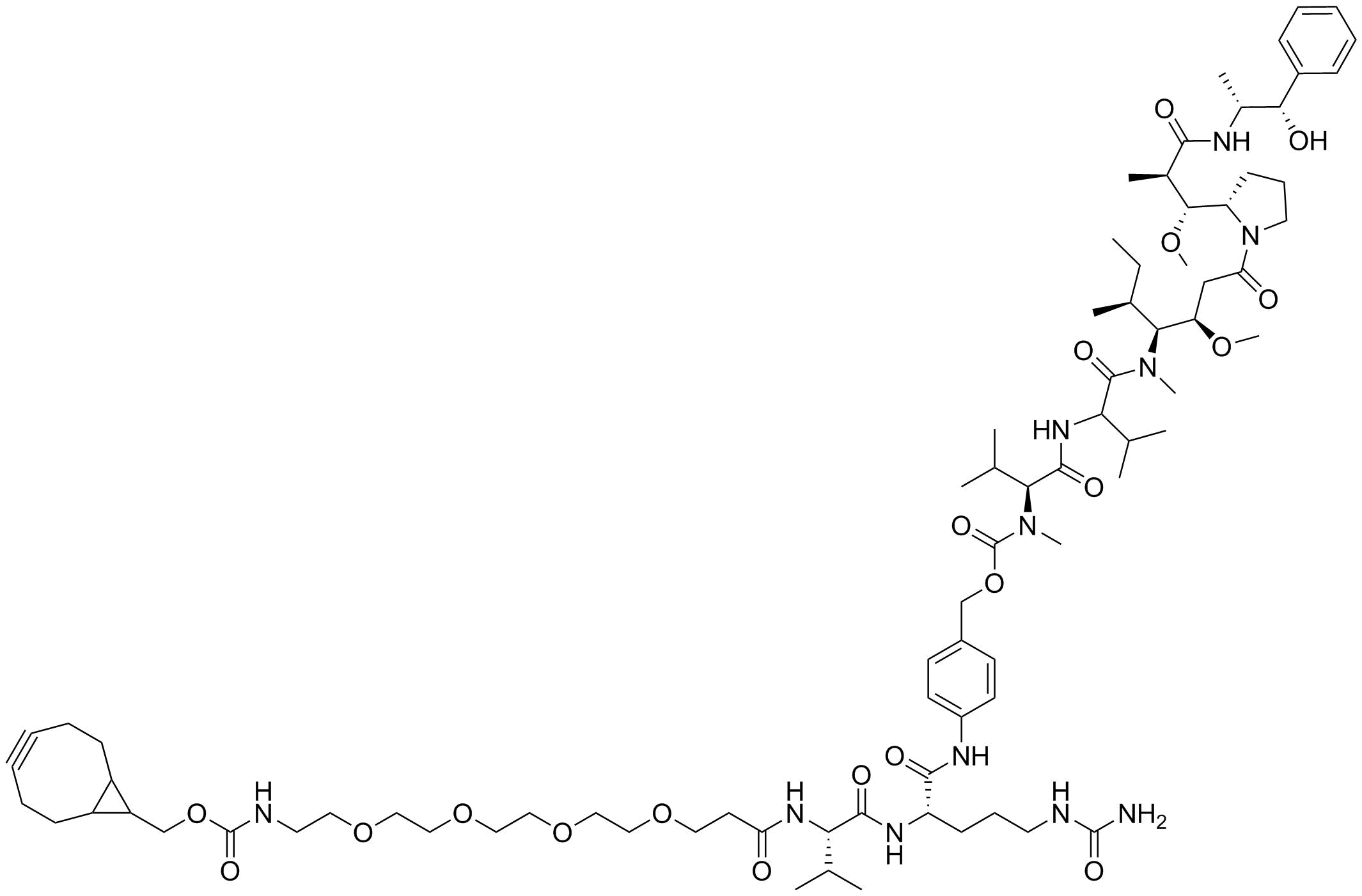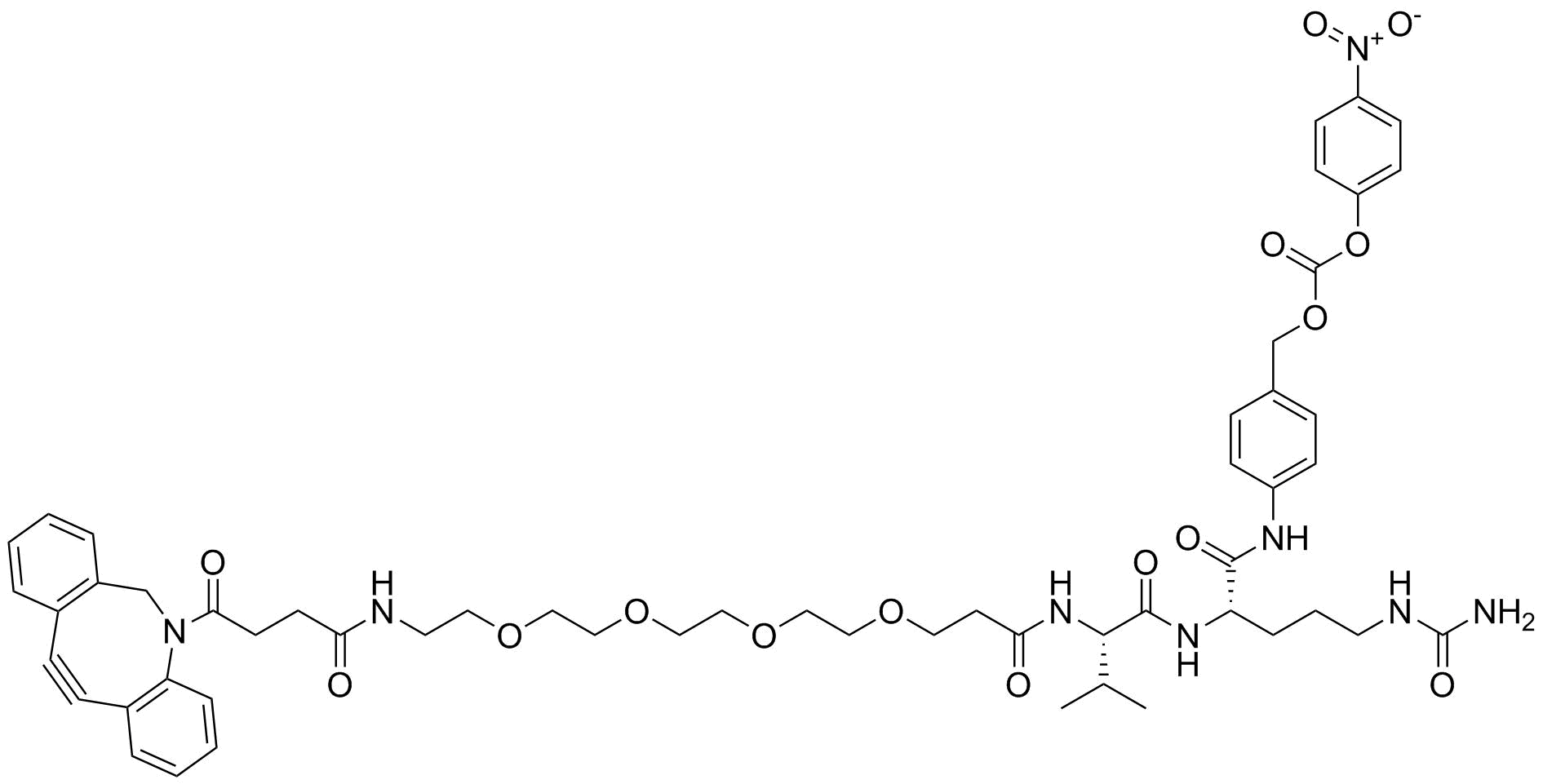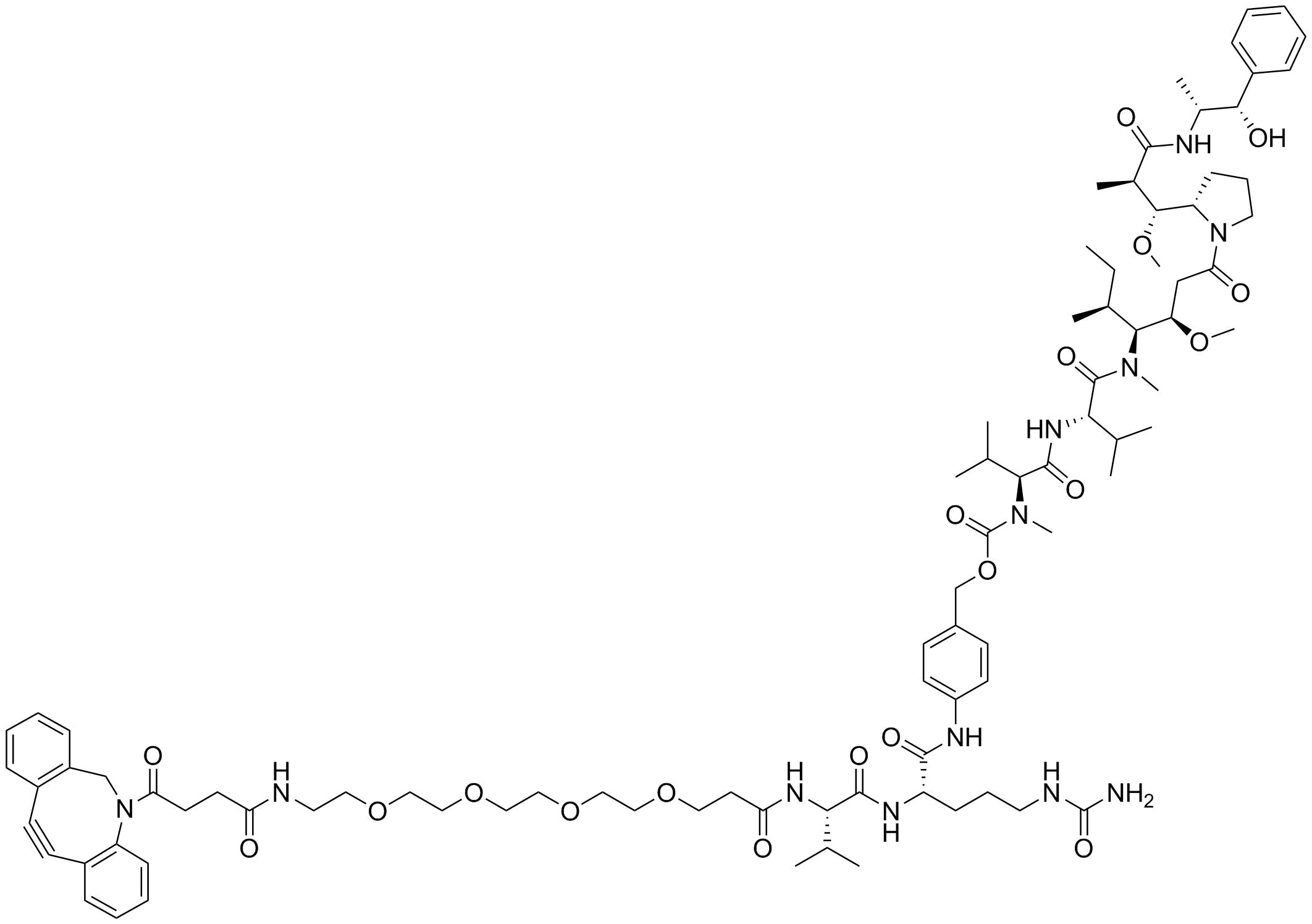Valine-citrulline (Val-Cit) linkers are commonly used in antibody-drug conjugates (ADCs) for targeted cancer therapy. These linkers are designed to be cleaved by specific enzymes within the target cells, releasing the attached drug to exert its therapeutic effect.
The Val-Cit linker includes a valine-citrulline dipeptide sequence, which is recognized and cleaved by lysosomal proteases, such as cathepsin B. Once the ADC is internalized by the target cell, it is transported to the lysosome. The acidic environment and presence of proteases in the lysosome facilitate the cleavage of the Val-Cit linker at the amide bond between valine and citrulline. Cleavage of the linker triggers a self-immolative process, which leads to the release of the active drug molecule inside the target cell and ensures that the cytotoxic drug is delivered specifically to the cancer cells, minimizing damage to healthy tissues.
















